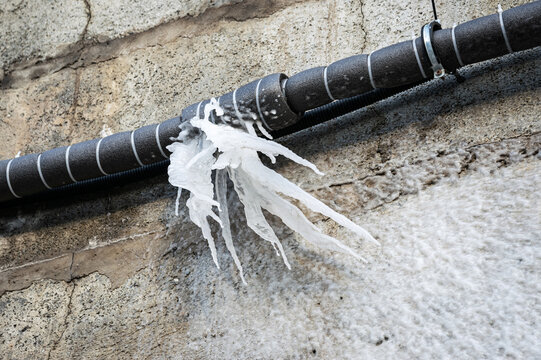We have stumbled on this article on How to prepare your home plumbing for winter weather directly below on the net and concluded it made sense to relate it with you here.

Winter can ruin your pipes, particularly by freezing pipes. Below's how to prevent it from happening and what to do if it does.
Introduction
As temperatures drop, the risk of icy pipelines increases, potentially resulting in costly repairs and water damages. Comprehending exactly how to prevent frozen pipelines is vital for house owners in chilly climates.
Prevention Tips
Shielding susceptible pipes
Cover pipes in insulation sleeves or use warmth tape to shield them from freezing temperature levels. Focus on pipelines in unheated or exterior areas of the home.
Heating strategies
Maintain interior rooms appropriately warmed, particularly locations with plumbing. Open cupboard doors to allow cozy air to circulate around pipelines under sinks.
How to recognize frozen pipes
Seek decreased water circulation from faucets, unusual smells or noises from pipelines, and noticeable frost on exposed pipes.
Long-Term Solutions
Architectural changes
Take into consideration rerouting pipelines far from exterior wall surfaces or unheated locations. Include added insulation to attic rooms, basements, and crawl spaces.
Updating insulation
Purchase high-quality insulation for pipelines, attic rooms, and wall surfaces. Proper insulation assists preserve regular temperatures and minimizes the risk of frozen pipelines.
Securing Exterior Pipes
Garden tubes and outdoor taps
Separate and drain pipes garden hose pipes before wintertime. Set up frost-proof faucets or cover outdoor taps with shielded caps.
Understanding Icy Pipelines
What triggers pipelines to ice up?
Pipelines freeze when exposed to temperature levels listed below 32 ° F (0 ° C) for prolonged periods. As water inside the pipes ices up, it broadens, putting pressure on the pipeline walls and possibly causing them to rupture.
Risks and problems
Icy pipes can lead to water system disturbances, home damages, and pricey repair services. Ruptured pipes can flooding homes and create considerable architectural damage.
Indicators of Frozen Piping
Recognizing icy pipelines early can prevent them from breaking.
What to Do If Your Pipelines Freeze
Immediate activities to take
If you presume icy pipelines, maintain taps available to ease pressure as the ice thaws. Utilize a hairdryer or towels taken in hot water to thaw pipelines slowly.
Conclusion
Protecting against icy pipelines calls for proactive measures and quick feedbacks. By comprehending the causes, indicators, and safety nets, house owners can protect their pipes throughout winter.
5 Ways to Prevent Frozen Pipes
Drain Outdoor Faucets and Disconnect Hoses
First, close the shut-off valve that controls the flow of water in the pipe to your outdoor faucet. Then, head outside to disconnect and drain your hose and open the outdoor faucet to allow the water to completely drain out of the line. Turn off the faucet when done. Finally, head back to the shut-off valve and drain the remaining water inside the pipe into a bucket or container. Additionally, if you have a home irrigation system, you should consider hiring an expert to clear the system of water each year.
Insulate Pipes
One of the best and most cost-effective methods for preventing frozen water pipes is to wrap your pipes with insulation. This is especially important for areas in your home that aren’t exposed to heat, such as an attic. We suggest using foam sleeves, which can typically be found at your local hardware store.
Keep Heat Running at 65
Your pipes are located inside your walls, and the temperature there is much colder than the rest of the house. To prevent your pipes from freezing, The Insurance Information Institute suggests that you keep your home heated to at least 65 degrees, even when traveling. You may want to invest in smart devices that can keep an eye on the temperature in your home while you’re away.
Leave Water Dripping
Moving water — even a small trickle — can prevent ice from forming inside your pipes. When freezing temps are imminent, start a drip of water from all faucets that serve exposed pipes. Leaving a few faucets running will also help relieve pressure inside the pipes and help prevent a rupture if the water inside freezes.
Open Cupboard Doors
Warm your kitchen and bathroom pipes by opening cupboards and vanities. You should also leave your interior doors ajar to help warm air circulate evenly throughout your home.

Hopefully you enjoyed our excerpt about How to prepare your home plumbing for winter weather. Thanks so much for finding the time to read through our posting. In case you appreciated our page plz remember to share it. I praise you for being here. Please come by our blog back soon.
Recurring Service Plans